Gil Smith designed and built around 400 boats for the shallow waters of New York’s Great South Bay between the 1860s and 1936. In his early years he mostly built working craft, such as oyster-fishing boats. Speed was an advantage for these craft, as beating competitors to the market might ensure a higher price. These working craft typically had a generous beam to provide form stability, plenty of room for the catch, and low freeboard aft for ease of landing that catch.
Smith transferred these basic characteristics to the pleasure boats he later designed and built, when the decline of the oyster fishery coincided with a boom in local tourism. These boats have seen a resurgence in popularity in recent years, thanks largely to the efforts of Donn Constanzo of Greenport, New York, whose company, Wooden Boatworks, recently built a replica of Smith’s 36′ 9″ sloop KID—an evolution of the signature Gil Smith hull shape. Costanzo has described Smith as “the finest designer of shoal draft yachts ever.”
Smith produced his 21′ 6″ catboat LUCILE in 1891, when he was at the height of his popularity. This boat’s raked elliptical transom, plumb stem, and generous beam were typical of his designs of that time. The boat under consideration here is a scaled-down interpretation of that boat—a 14-footer built by a student at the U.K.’s Lyme Regis Boatbuilding Academy.
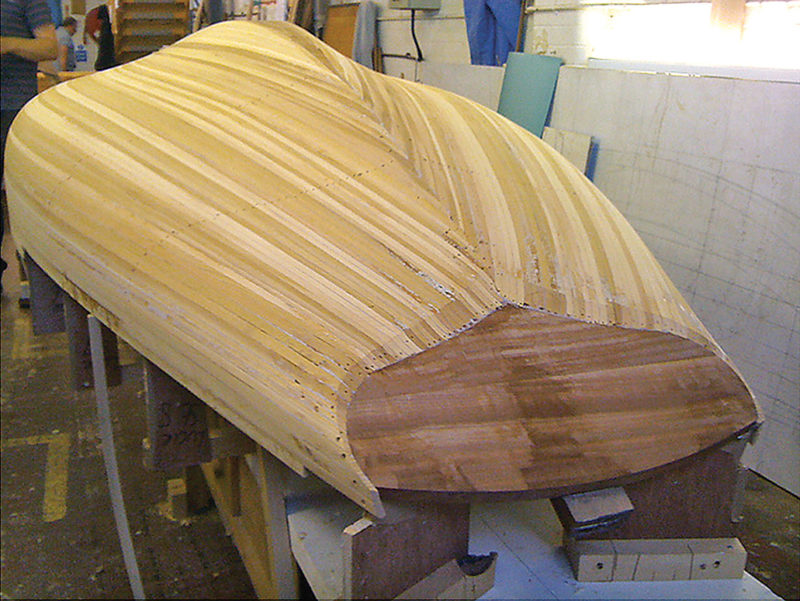 Nigel Sharp
Nigel SharpTyler built his new boat in strip planked cedar, sheathing it inside and out in biaxial fiberglass cloth. The backbone is of laminated sapele.
When Michael Tyler, a former art student and bank manager, began his boatbuilding studies in March 2011, he knew he wanted to build something “a bit different.” While casually thumbing through one of the boating magazines at the academy, he saw a very small photograph of a replica of LUCILE. He knew he’d found what he was looking for.
Tyler talked to his instructors about LUCILE, it soon became apparent that to build so large a boat would not be practical, both in terms of budget and shop space. “I might have been depriving someone else of the opportunity to build a boat,” he said of the prospect. A smaller version was considered, but as scaling a boat down while keeping the original proportions simply doesn’t work, this would not be as straightforward as Tyler had first hoped. However, the solution came from instructor Mike Broome, who offered to carry out the necessary design work, in his spare time, for a 14′ interpretation.
Broome’s priority was to ensure the boat would be “visually in keeping with the original,” with the sail plan being one of the main considerations. Smith’s boats were already considered to be overcanvased, and if LUCILE’s mainsail were simply scaled down it would have measured 163 sq ft. Broome realized this would be absurd with the reduced weight and beam of the hull; he initially considered reducing it to 153 sq ft, and ultimately settled on 120. On the other hand, the new boat’s freeboard was barely scaled down at all. “I was trying to recreate the same kind of useful performance without restricting the boat to light winds only,” Broome said. “I hoped the result would be majestic but usable.”
Athough LUCILE was of traditional carvel construction, Tyler didn’t want to follow that path, as he expected that the new boat would spend long periods out of the water; if carvel planked, she would have to swell tight every time she was launched. So it was decided that the hull would be strip-planked with 3⁄8″-thick western red cedar, and sheathed inside and out with a biaxial cloth and epoxy. After the lines were lofted, the backbone was laminated in sapele, the building jig was assembled, and it was time to start planking.
The planking provided a challenging lesson for Tyler. In carvel construction, planks are tapered to accommodate the varying girth of a boat at various sections along its length. On the other hand, strip planking normally uses parallel planks with pre-machined concave and convex edges to provide an easy and effective gluing surface. Tyler was attracted by the potential speed advantage of this technique, but he was disappointed to find that the marked twist in the stern sections of the hull meant that he had to individually taper a number of planks over about 5′ of their lengths, reducing the width from 7⁄8″ in some cases to as little as 1⁄2″. This fussy fitting slowed the work considerably.
Before the planked hull was turned right-side up, it was sheathed and then faired with an epoxy compound—a process that took Tyler and fellow student John Bicknell more than a week. It was then painted with a two-pack polyurethane paint. The deck is built of 6mm ply over sapele and Douglas-fir deckbeams. Tyler intended to lay swept western red-cedar planks over the plywood, but he ran out of time. The mast and gaff are hollow, and are built of eight Sitka-spruce staves joined along their edges with so-called “bird’s-mouth” joints. The boom is of Douglas-fir.
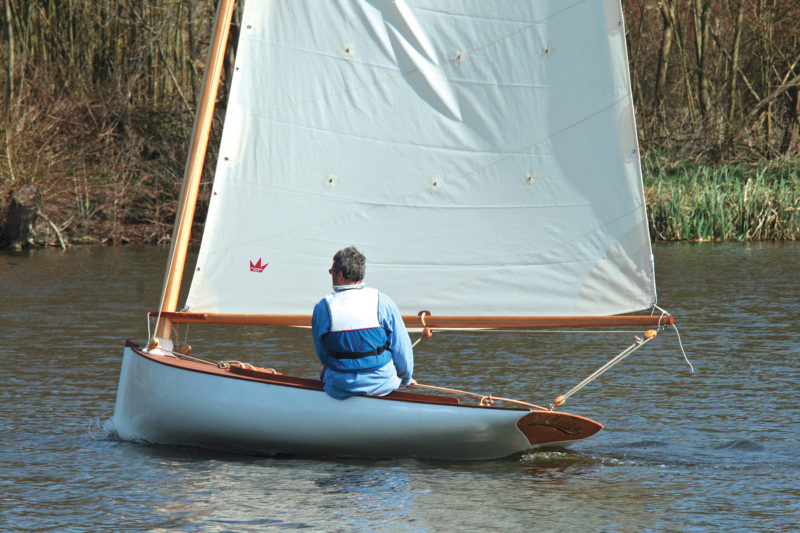 Nigel Sharp
Nigel SharpLUCIE has a generous sail plan, and feels tender initially. But once her angle of heel reaches about 15 degrees, she leans on her leeward bilge and firms up considerably.
Launch Day is a fixed date on the calendar at Lyme Regis for all the students. “If you couldn’t launch on Launch Day,” Tyler said, “that would be a travesty, so you have to push yourself just to cross the finish line.” Although he often worked until nine or ten at night throughout the course, as Launch Day approached he increasingly found himself still at work at 2 a.m..
Although there were still some finishing touches such as sole boards and deck varnish to complete, Tyler’s new boat, now named LUCIE, was ready to sail on Launch Day. With her rig in place, she took her turn among the other seven student-built boats, and was launched into Lyme Regis Harbour to great cheers from the assembled crowd. It was a cold December day with a squally offshore wind, and so Tyler wore “two wetsuits and a raincoat.” LUCIE’s sail, made by Elvstrom’s Jerry White, was hoisted with a reef in it. Bicknell, by Tyler’s own admission a much more experienced dinghy sailor, took the helm initially.
“I was a little concerned about the conditions,” he said, “and so I pushed for a reef to give us more of a chance of staying upright should something jam or should the boat turn out to be difficult to handle. But as it turned out it was fine, and if we hadn’t been enjoying it so much we would have come back in and taken out the reef.”
The conditions were considerably more pleasant when I took LUCIE out for her second sail four months later on a small lake adjacent to the River Thames at Pangbourne, where Tyler has taken a job as curator of a new maritime museum. It was a beautiful spring day with a light breeze occasionally rising to about a Force 3 (7–10 knots). However, just before we launched LUCIE, it was clear that I would have no choice other than to sail away from the slipway on a broad reach and immediately jibe. This was not an ideal prospect in a boat of unknown performance.
But I needn’t have worried. The maneuver went without a hitch, and I was then able to enjoy the delights of this lively little boat on all points of sailing. She felt very stable thanks to the stability afforded by her generous hull sections and her 812 lbs displacement. She accelerated nicely and tracked well, and didn’t need much steering thanks to the large galvanized steel rudder swinging from the trailing edge of her long keel. However, she did heel more than I expected in the gusts, albeit not suddenly, and initially it occurred to me that perhaps Broome should have taken his sail reduction a little farther. However, as I got used to the boat, it became apparent that, as she heeled to about 15 degrees and the leeward bilge dug in and the leverage of the centerboard, ballasted with 58 lbs of lead, took effect, it would take a lot for her to go any farther. I later discovered that Bicknell had come to the same conclusion on LUCIE’s first sail.
There were some inevitable teething problems. The peak halyard needs the addition of a purchase to eliminate the crease between the throat and the clew, and the halyard falls must be relocated to avoid the boom jaws pressing against them when off the wind. But Tyler now has the time and opportunity to attend to these matters and will then be able to get a lot of enjoyment out of this great little boat. He’ll also turn his attention to the possibility of building other versions.![]()
This article appears as archival material. There is no known source for plans.
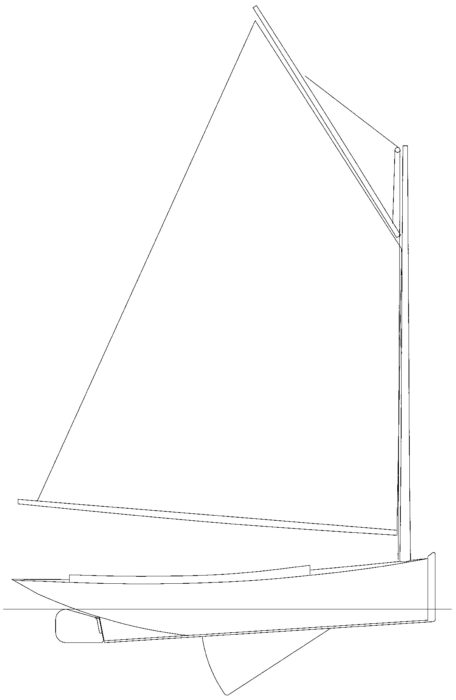
LUCIE, with her wide beam, wineglass transom, plumb bow, and firm sections is unmistakably inspired by Gil Smith. Mike Broome, who drew these lines, set out to retain the aesthetic qualities of the 21’ Smith original, while creating a safe and seaworthy 14’ interpretation of that design.
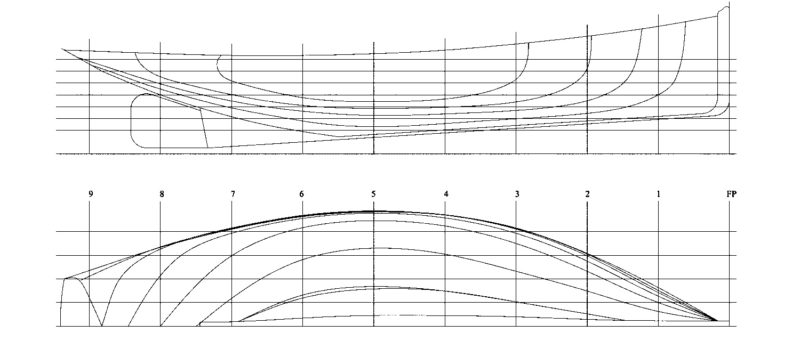
LUCIE Particulars: LOA 14’1″, LWL 12′, Beam 4’10 1/2″, Draft, board up: 1’1 1/2″, Draft, board down: 3′, Sail area 122 sq ft, Disp. 812 lbs
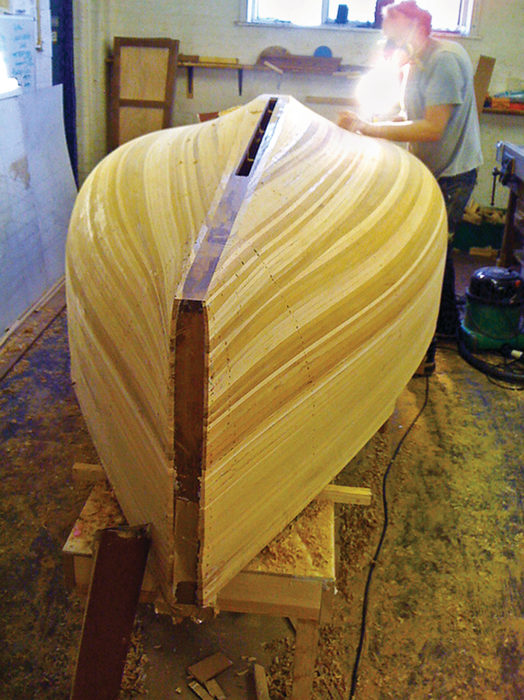
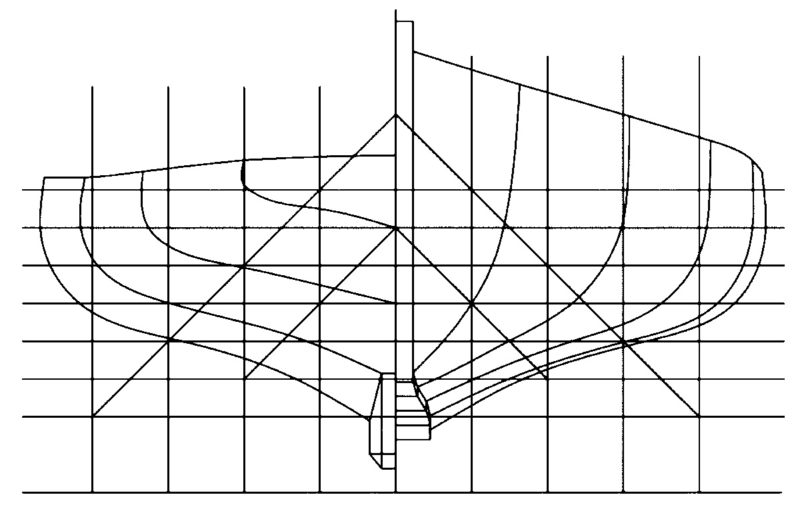
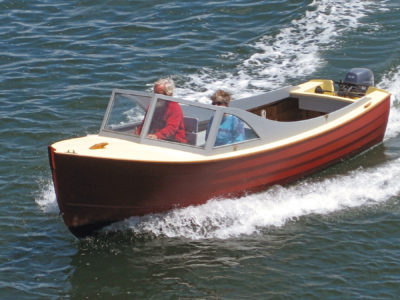
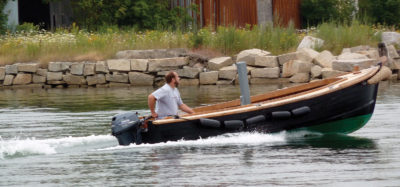


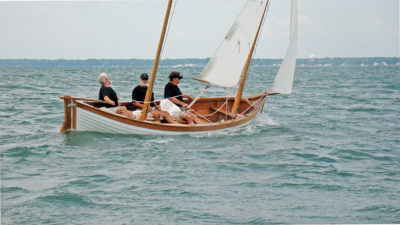
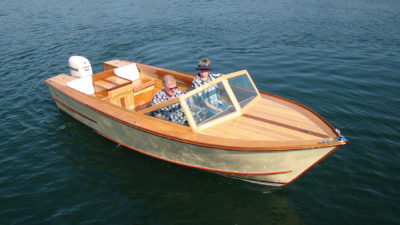
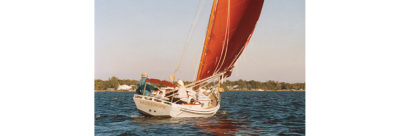
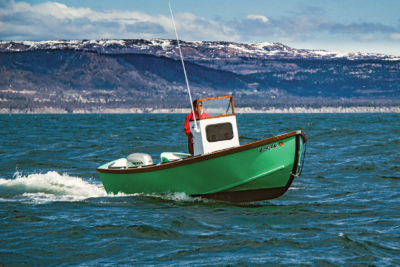
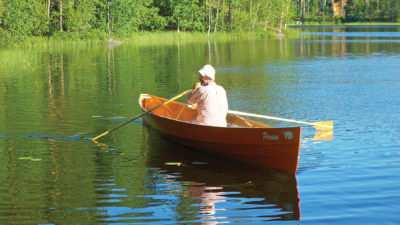
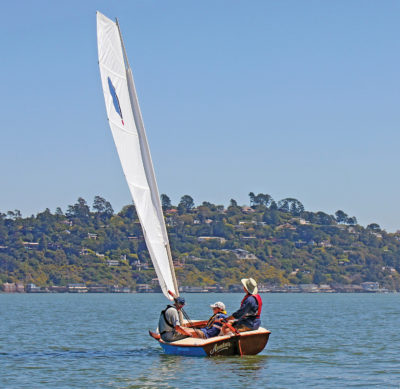
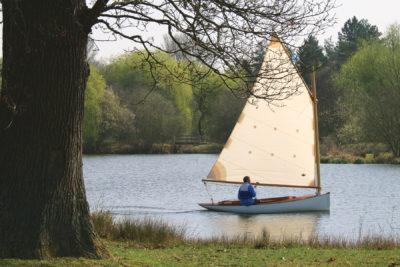
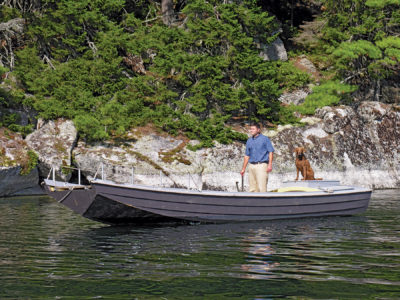
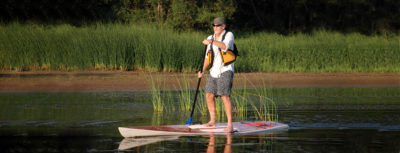
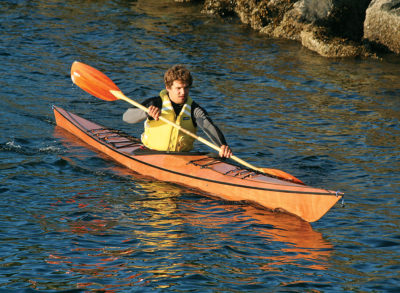

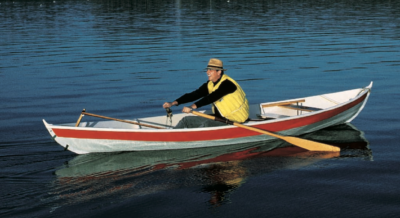
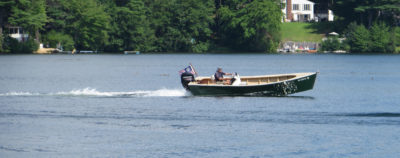
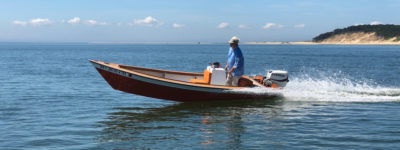
Gil Smith’s Great South Bay has always been my favorite cat boat. I am a wooden-boat builder and have made a half model of this beautiful boat. I am wondering if you laid the lines down for your 14 footer and should you have the offsets, I would be most honored to pay you for the measurements. I am elderly now, but it would be great for me to build this boat in my boat shop. Great idea to build a smaller version of this great little boat. Thanks and best regards.
Hello, and thank you kindly for this story. I have completed a Hvalsoe 13 and a Nutshell pram. Lucie looks like a 2022-2023 winter project.
I am 77 but would love to have offsets and or plans for Lucie. (I might change her name to an old girlfriend of mine)
Thanks for the article,
Brian Mosher,
Bayswater,
Lunenburg County, NS
What an elegant little boat!
She looks like a dream 🙂
She certainly is very attractive, both in construction and on the water. If there are plans to release the plans then I too would be interested to subscribe.
Thanks and well done!